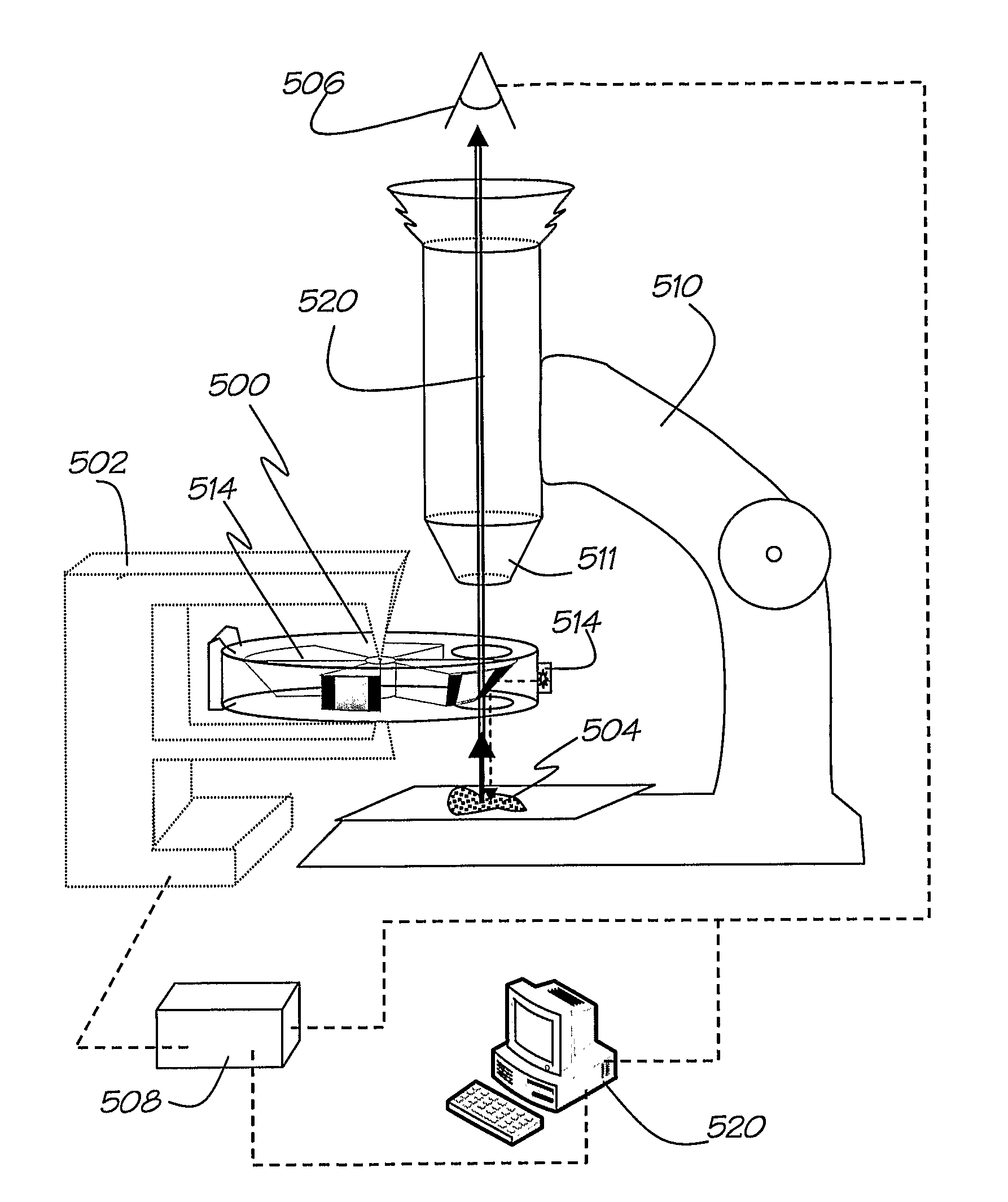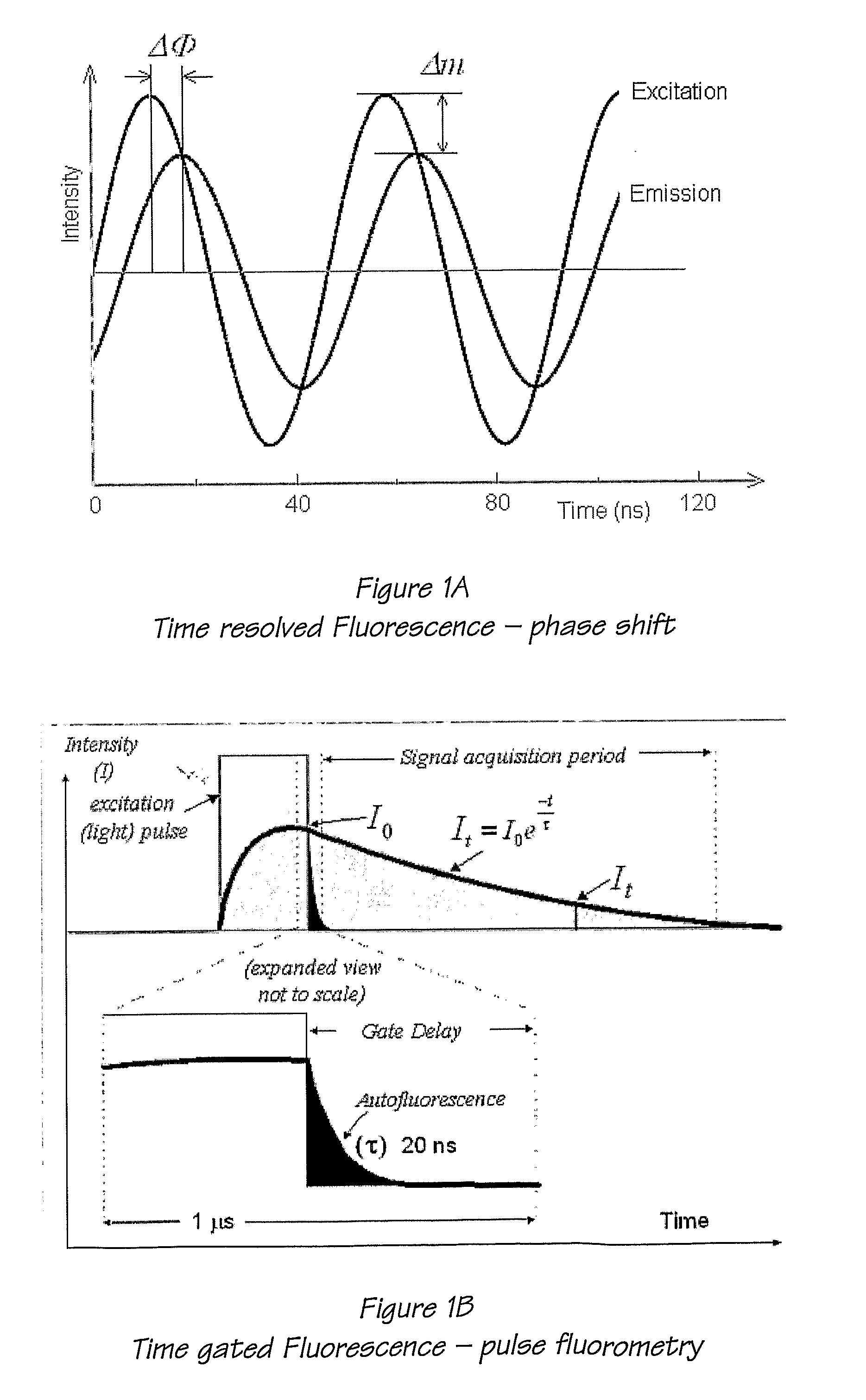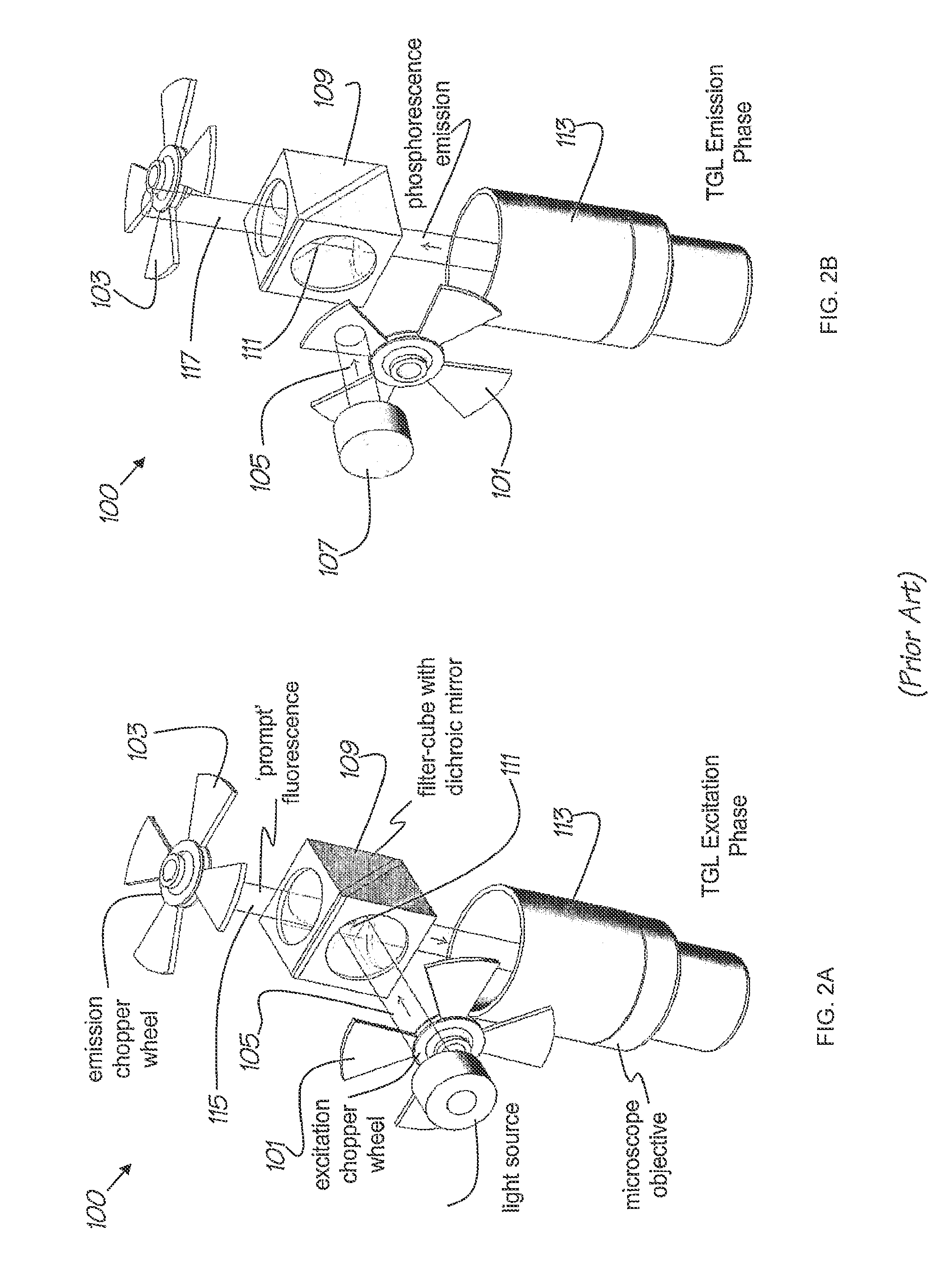Auto-synchronous fluorescence detection method and apparatus
a fluorescence detection and auto-synchronous technology, applied in the direction of photometry, lighting and heating apparatus, converting sensor output, etc., can solve the problems of obscuring or diminishing the visibility of synthetic fluorescent probes, losing much of their discriminatory power in the presence of autofluorescence,
- Summary
- Abstract
- Description
- Claims
- Application Information
AI Technical Summary
Benefits of technology
Problems solved by technology
Method used
Image
Examples
Embodiment Construction
[0182]Referring to FIG. 3A, there is provided an arrangement 200 of an apparatus for use in a time gated luminescence detection system. The apparatus 200 comprises
[0183]a) a first communication portion 204 for providing a first optical communication path between an illumination source location and a sample location;
[0184]b) a second communication portion 206 for (i) providing a second optical communication path between the sample location and the detection location, the second communication portion being operable to enable detection at the detection location of a desired optical emission from an illuminated sample which in use is located at the sample location via the second optical communication path; and (ii) concurrently preventing optical communication on the first optical communication path; and
[0185]c) a gate portion 214 for gating the first and second optical communication paths;
[0186]the apparatus 200 being capable of being arranged to provide the first optical communication...
PUM
| Property | Measurement | Unit |
|---|---|---|
| emission decay time | aaaaa | aaaaa |
| optical wavelengths | aaaaa | aaaaa |
| optical wavelengths | aaaaa | aaaaa |
Abstract
Description
Claims
Application Information
 Login to View More
Login to View More - R&D
- Intellectual Property
- Life Sciences
- Materials
- Tech Scout
- Unparalleled Data Quality
- Higher Quality Content
- 60% Fewer Hallucinations
Browse by: Latest US Patents, China's latest patents, Technical Efficacy Thesaurus, Application Domain, Technology Topic, Popular Technical Reports.
© 2025 PatSnap. All rights reserved.Legal|Privacy policy|Modern Slavery Act Transparency Statement|Sitemap|About US| Contact US: help@patsnap.com



